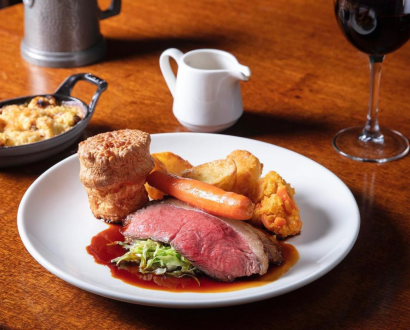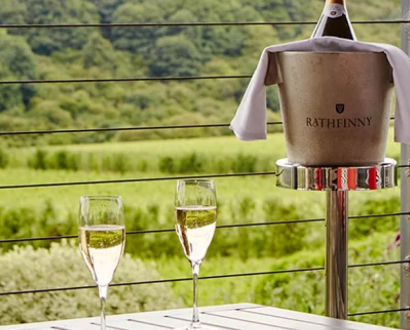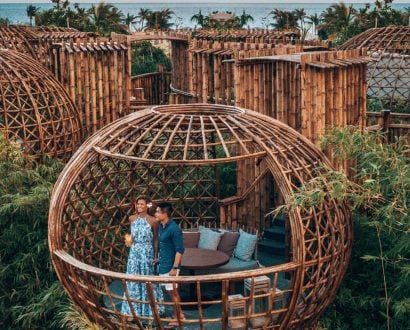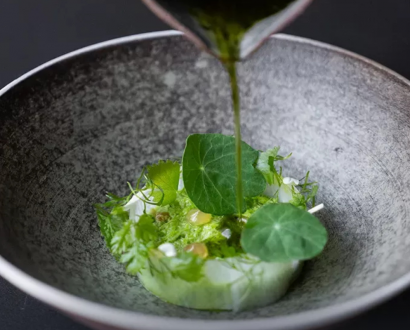“There’s no restaurant here,” says my very confused fiance, eyes darting around, looking wary, after we have just wandered down a narrow corridor off one of Melbourne’s famed laneways. We are standing in front of two apartment building entrances and I know we are supposed to press B01 on one of the keypads, but which one?
I take my chances and presto! – we are buzzed in and take the elevator to the basement. No signage. Hidden entrance. Yep, we are definitely in Melbourne. Or so I think, until we stroll through the door of Japanese restaurant Ishizuka, winner of two hats at the just-announced Good Food Guide Awards 2020.
“Kaiseki dates back 600 years to the ceremonial cooking practices of Zen monasteries and was later adopted by Japanese royalty.”
What greets us is the back of a very large, white fabric dome that, as we walk around to the other side, reveals that it is cocooning a whimsical and intimate bar area. Designed to resemble a Japanese lantern, it makes a dramatic, but soothing, backdrop to the open kitchen in front that is ringed by just 16 seats.
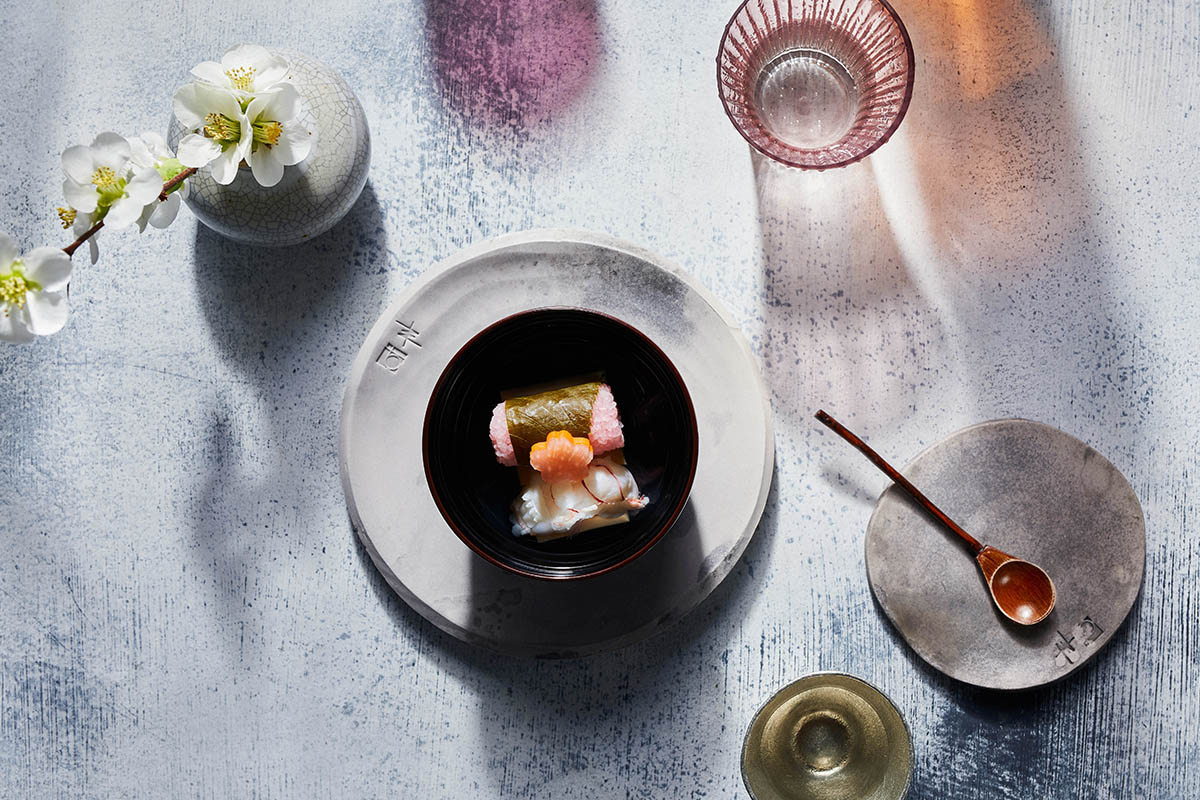
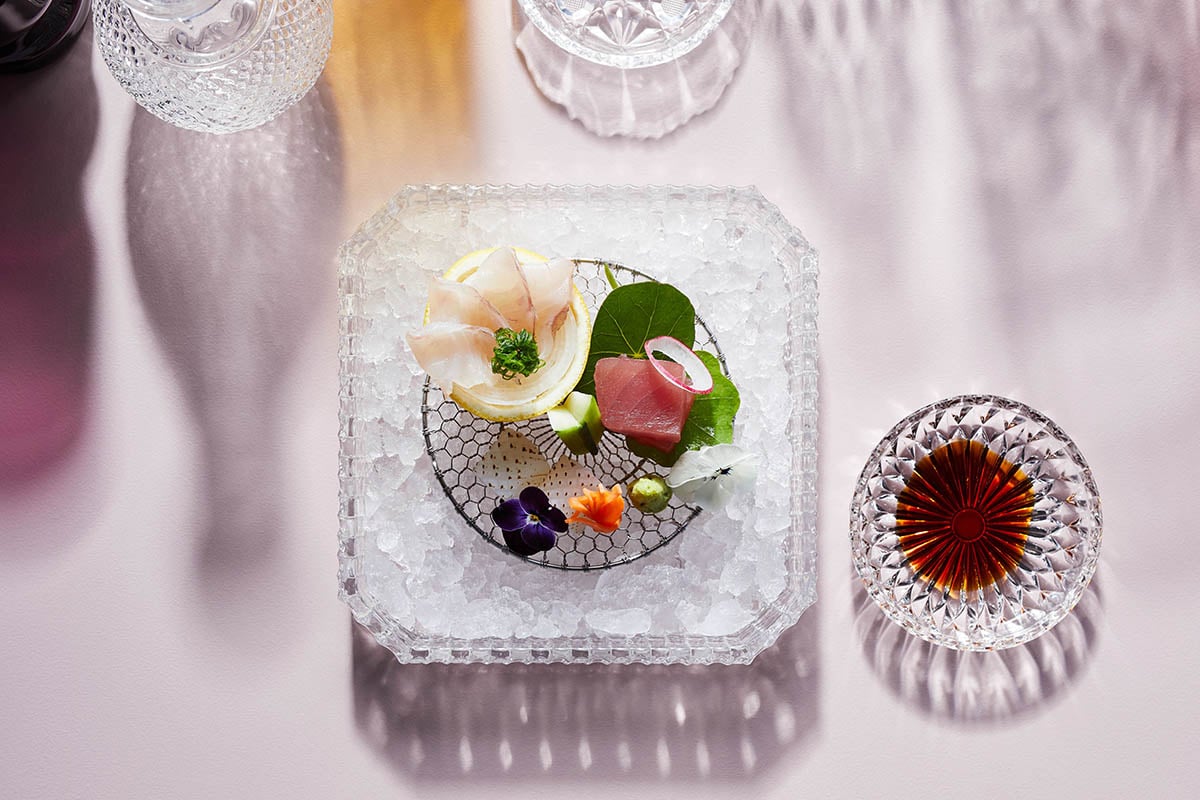
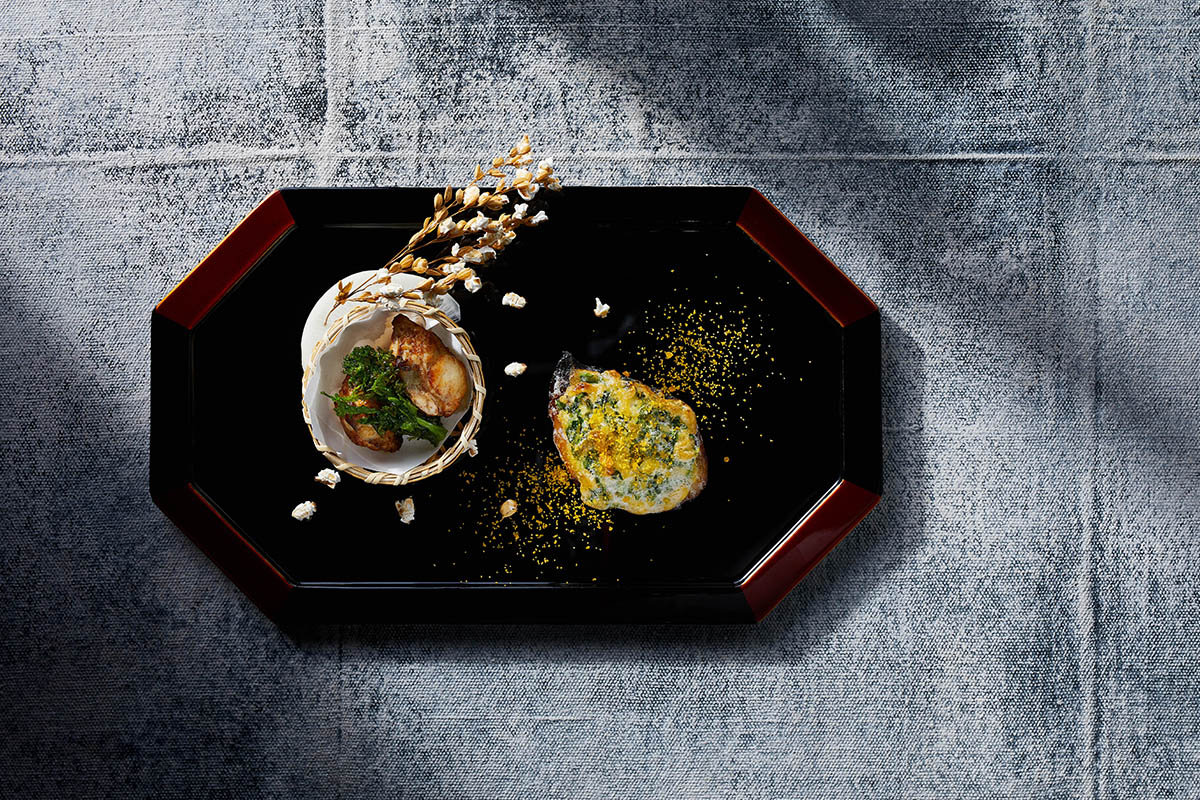
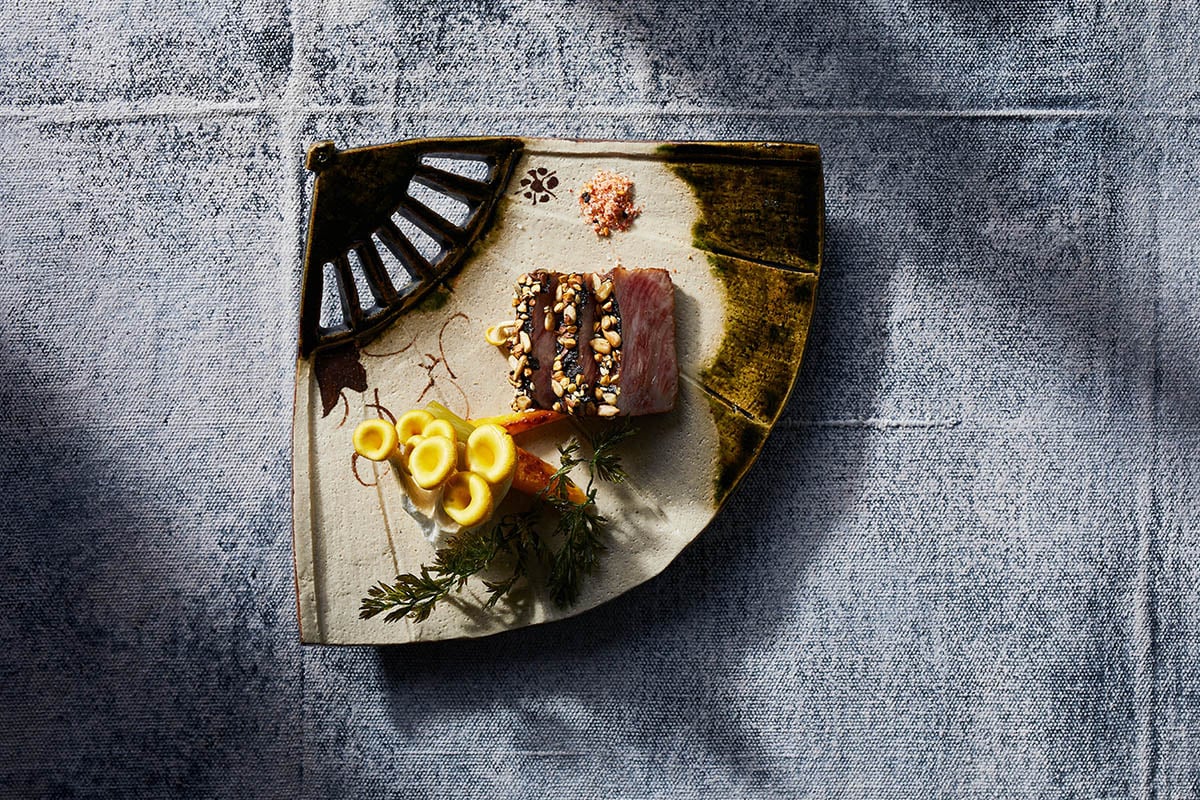
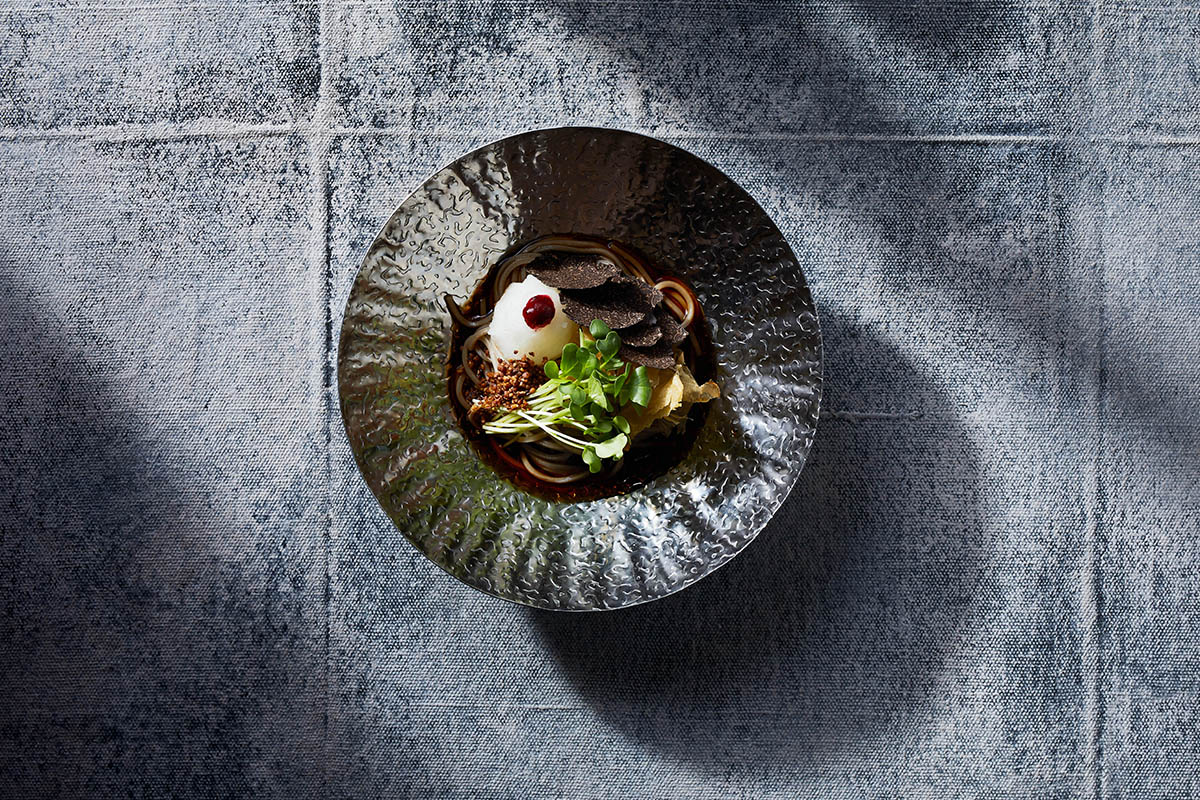
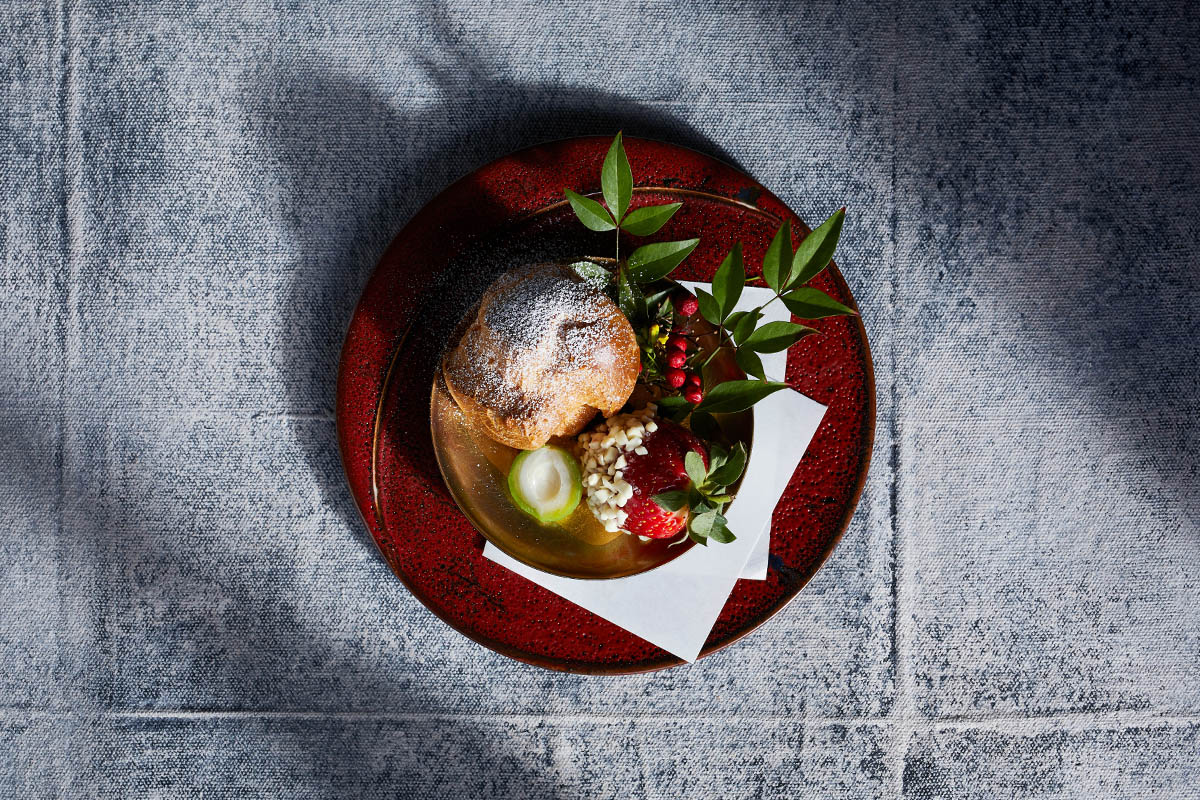
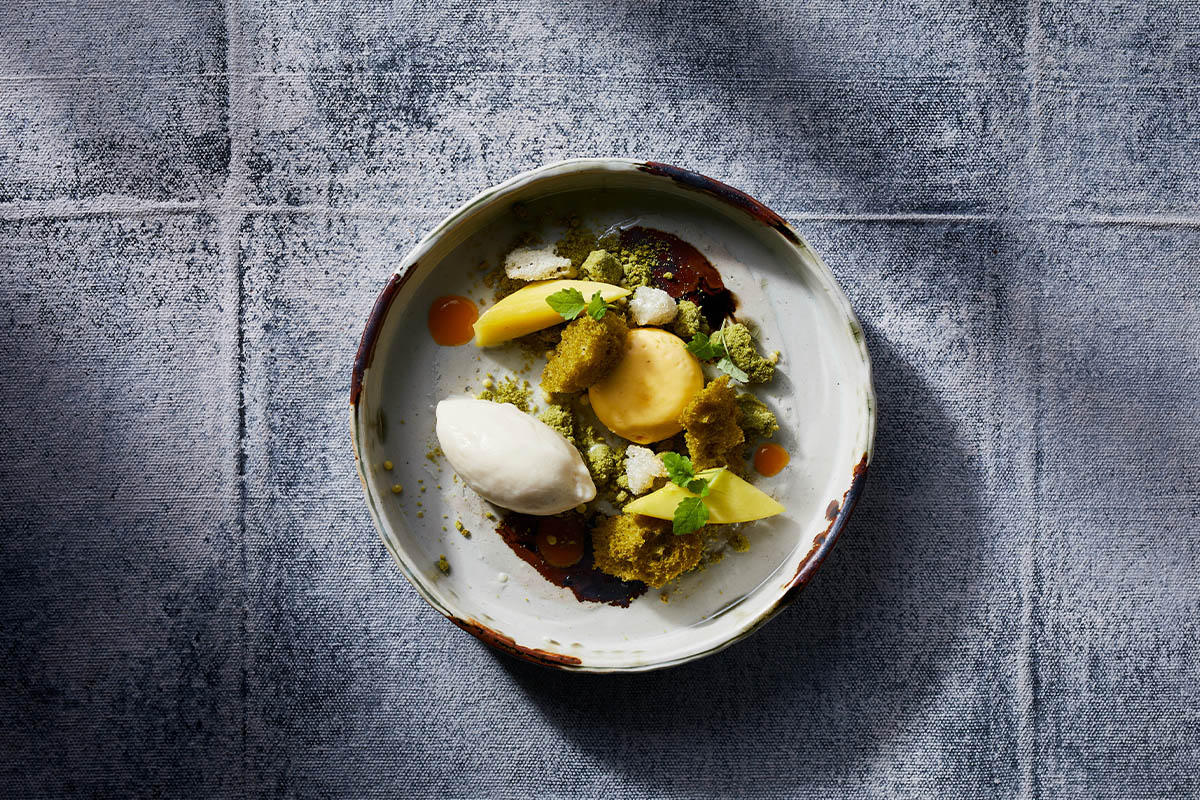
Concrete columns resembling tree trunks line the walls, and stepping into this sparse but luxurious, subterranean space feels like wandering into a secret restaurant in Kyoto – we have been transported even before we sit down.
Seasonal hospitality
After one of the chefs leans over the counter to hand us the restaurant’s business card (I remember my Japanese etiquette just in time and take it by the corners with both hands) we sip on apple and cherry blossom tea as our friendly hostess introduces us to the main event – we are here to indulge in an ancient multi-course dining experience known as kaiseki.
“Kaiseki dates back 600 years to the ceremonial cooking practices of Zen monasteries and was later adopted by Japanese royalty,” she explains. Adhering to the Japanese principle of ‘shun’, where you use ingredients at the peak of their freshness, kaiseki menus change with the seasons, and are created at the discretion of a master chef. Presentation is just as important as taste, and each dish is considered a work of art. Traditionally, a kaiseki menu includes nine courses, but chefs in Kyoto, famous for its kaiseki since it was the home of the imperial court, have been known to serve anywhere from six to 15 courses.
Tonight, head chef Hitoshi Miyazawa has prepared a 10-course spring menu to ‘showcase the season’s new harvest’. We choose to enjoy it with the matching wines and sakes from the drinks list curated by ex-Rockpool Bar & Grill sommelier David Lawler and his wife Sarah.
Ishizuka: A thoughtful meal
We begin with the Sakizuke course, a delicate dish of yuba served in bonito broth with lightly smoked bonito jelly, caviar, salmon roe and sea urchin. It is paired with a Shichiken sparkling sake that gently cuts through the salt flavours to create a light and fresh introduction to spring.
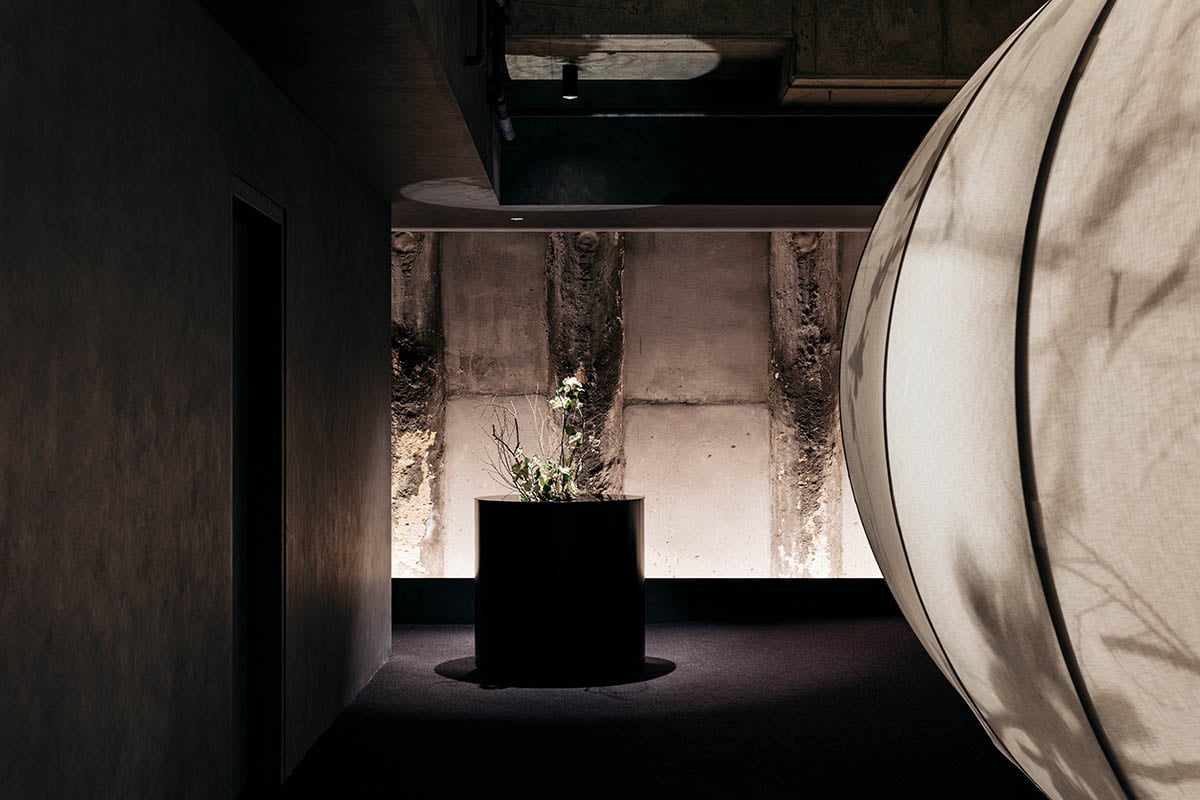

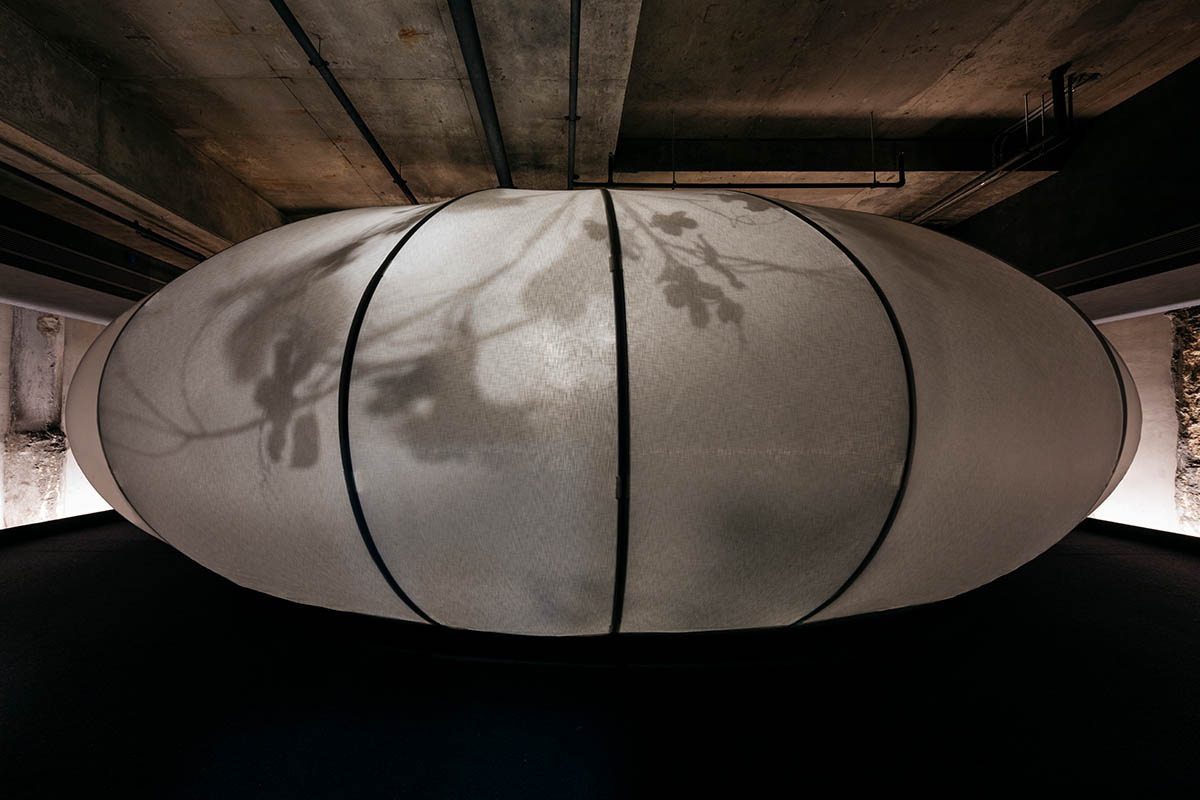
While each course in a kaiseki meal is supposed to be served simply in order to let the natural flavours shine through, this is juxtaposed with the intricate and complex presentation of the dishes. The Zensai course arrives on a wooden platter with its own bamboo screen and seasonal blossoms artfully leaning against eight tastes of spring. The asparagus mousse with saikyo miso is surprisingly sweet, and the braised abalone and baby squid are delectably juicy.
As we move through the courses, it’s clear that the subtlety of some of the dishes could leave the uninitiated disappointed. Big and bold are rarely the point, and gentle dishes like sakura mochi and white fish served alongside scampi and egg custard in a bonito broth need to be savoured slowly, even meditatively, to appreciate the wonderful authenticity and complexity of the flavours.
The perfect balance
Saying that, the sixth course of Kagoshima A5 Wagyu – the highest grade of Japanese Wagyu – cooked over charcoal and served with Japanese chilli, shimeji mushroom, carrot, black garlic and roasted seeds is a definite stand-out. Incredibly robust and tender, the marbling on the Wagyu will make any meat lover swoon on sight. It is faultlessly matched with a savoury and smoky 2018 Polperro Pinot Noir from the Mornington Peninsula.
Two desserts, including choux pastry filled with yuzu custard and an oolong tea ice cream with matcha cookie crumble, round off a delicious, and surprising meal. Kaiseki chefs are always aiming for an exact balance in taste, texture, colour and appearance – it’s well worth joining Ishizuka as they strive for perfection.
The spring menu is served until the end of November. From Wednesday through to Monday, Ishizuka offers its Kaiseki Menu for $235 per person. Wine matches are also available starting from an additional $120 per person and non-alcoholic matches are available from $60 per person. ishizuka.com.au.


